NJWM: Thrombolites at Lake Clifton

This is my Nature Journal With Me (NJWM) series where I do some nature journaling around Australia, chat about the adventure and share my journal entries.
Watch the YouTube video here:
Just south of Mandurah and Dawesville (where I previously nature journalled The Cut) are 10 narrow lakes in Yalgorup National Park, lying parallel to the coast. Lake Clifton (Noorook Yalgorup) has the freshest water of these and is furthest from the coast but is also special for another reason. It is one of only a few places in the world where we can see thrombolites.
Before I go into what thrombolites are let's find out how the lakes formed, since that partly explains their presence. During the past million years the periodic melting of the ice caps and subsequent changing sea levels caused the coast to shift and form a series of coastal sand dunes, some of which fossilised and became limestone. After the last ice age the sea level rose and filled the gap between the dunes, forming the lakes system.

Thrombolites
These are rock-like structures formed by microbial colonies that precipitate the calcium carbonate (lime) in the shallow water during photosynthesis.

During winter there is a significant inflow of groundwater (they need fresh water) so the water levels are high compared to the end of summer when the lake has dried out somewhat and the thrombolites are visible out of the water.
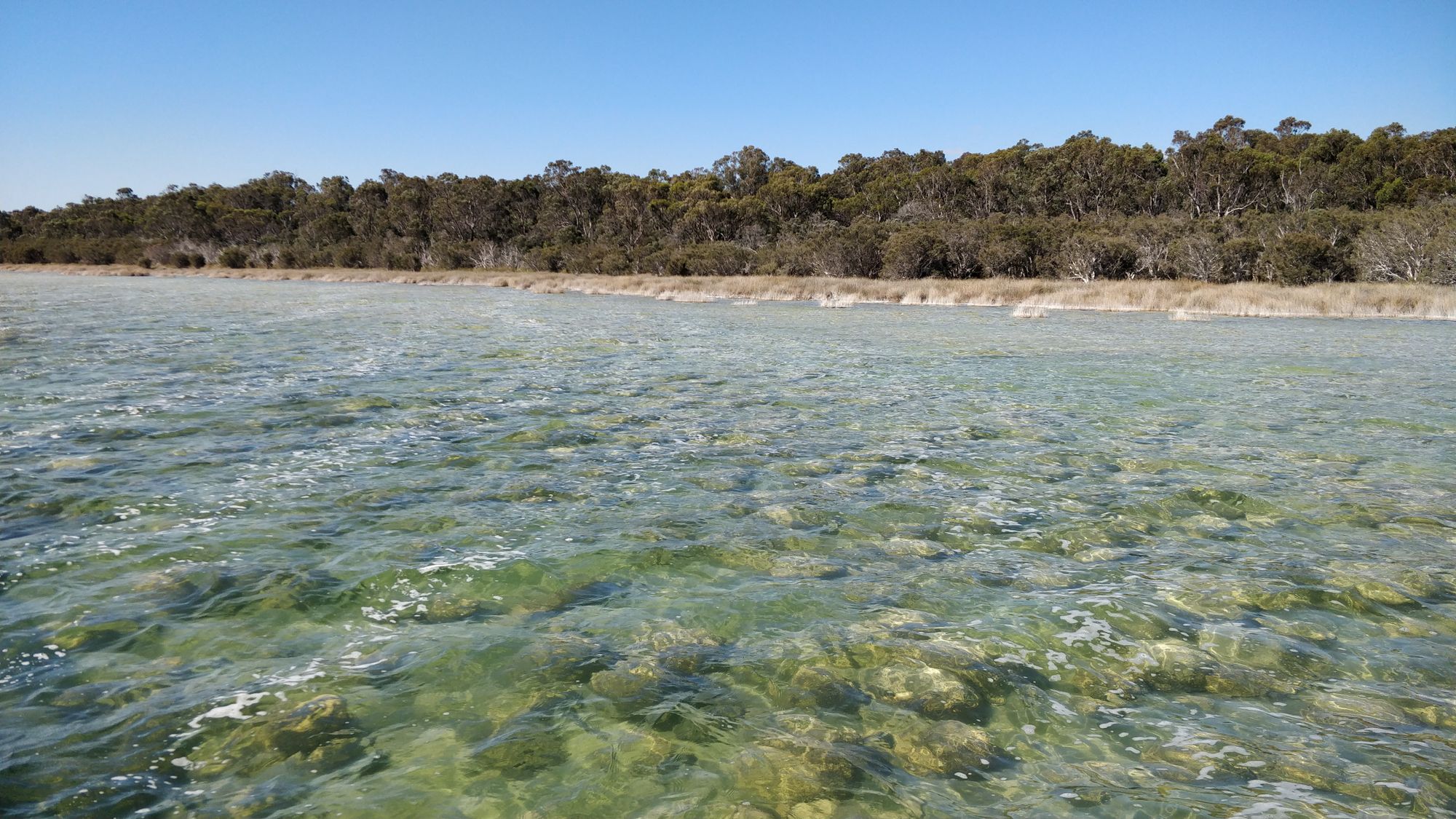
These thrombolites are descendants of some of the earliest lifeforms on Earth, 600 million years ago these ancestors produced the oxygen needed for life on land to exist today. The thrombolites in Lake Clifton are about 2000 years old. This is one of the few places in the world where modern thrombolites can be found, and this is the largest 'lake-bound' reef in the southern hemisphere.
They're similar to stromatolites that form layers, compared to the bubble (or clot) shaped pockets in thrombolites. The word thrombolites comes from Ancient Greek thrómbos meaning "clot" and líthos meaning "stone".

There are information signs at the carpark but I stopped reading and quickly took some photos when I realised it was swarming with mozzies (it is in a swamp after all). There are also some more signs along the jetty overlooking the thrombolites that provided lots of information about the formation of the lakes and thrombolites, as well as some warnings of how fragile they are both physically and in their environment.
Unfortunately due to the wind and high water levels I couldn't get a good look at the thrombolites up close without ripples, but at least there were no mozzies so I decided to write down the information and make a landscapito for this page.
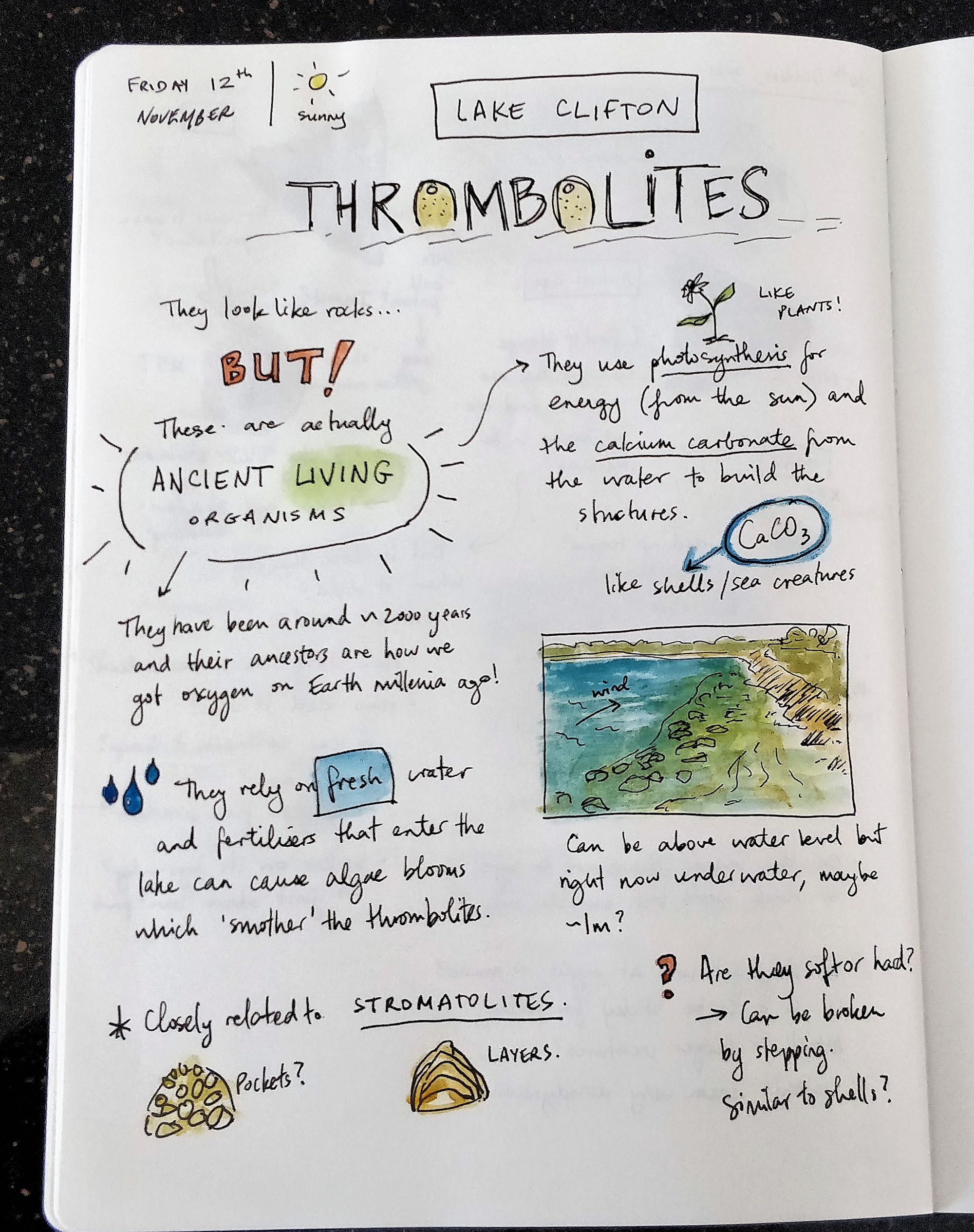
Maybe at the end of summer I'll come back to get a close-up when they're visible out of the water!
References
- Geology & Landforms of the South-West, by Iain Copp, Department of Biodiversity, Conservation and Attractions, 2018. Available from DBCA shop
- Wikipedia entry on thrombolites
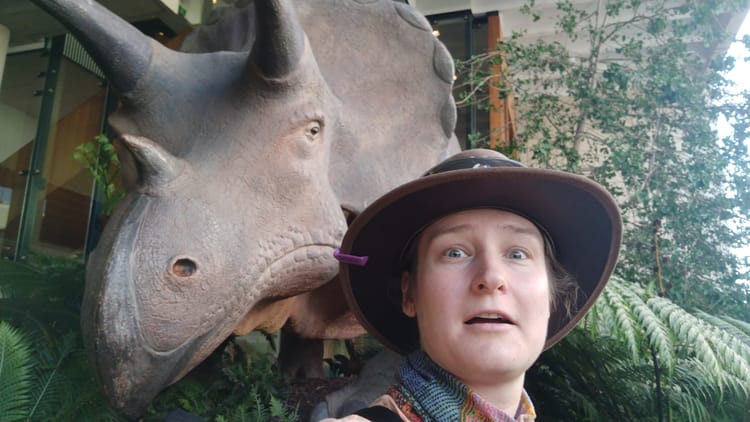
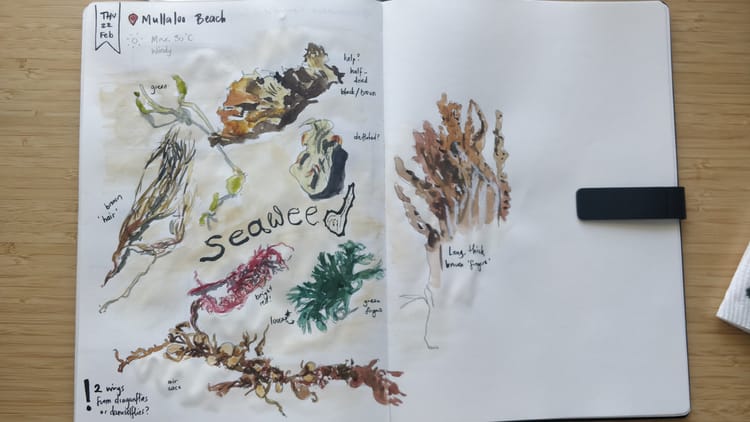
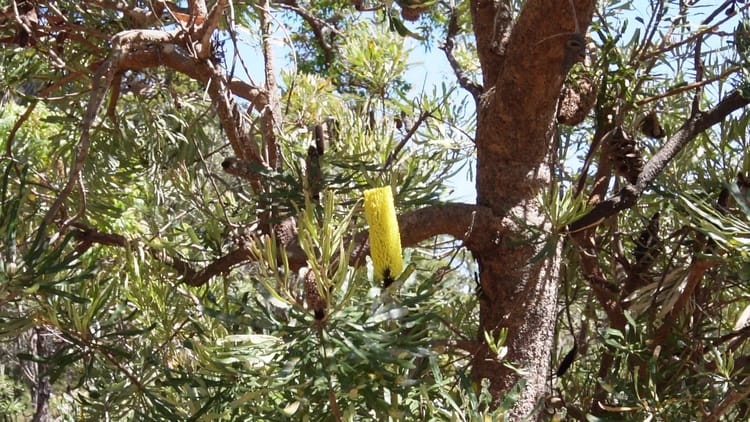
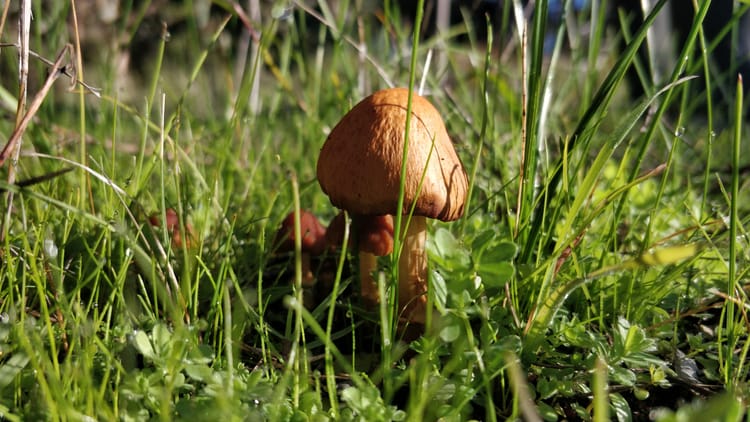
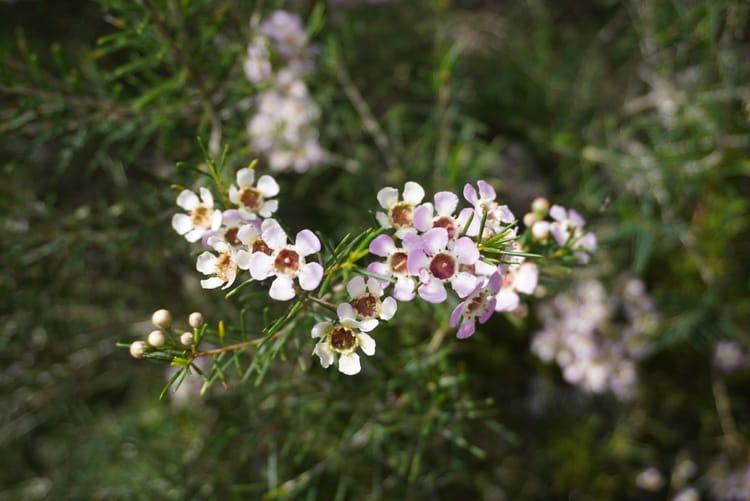
Member discussion